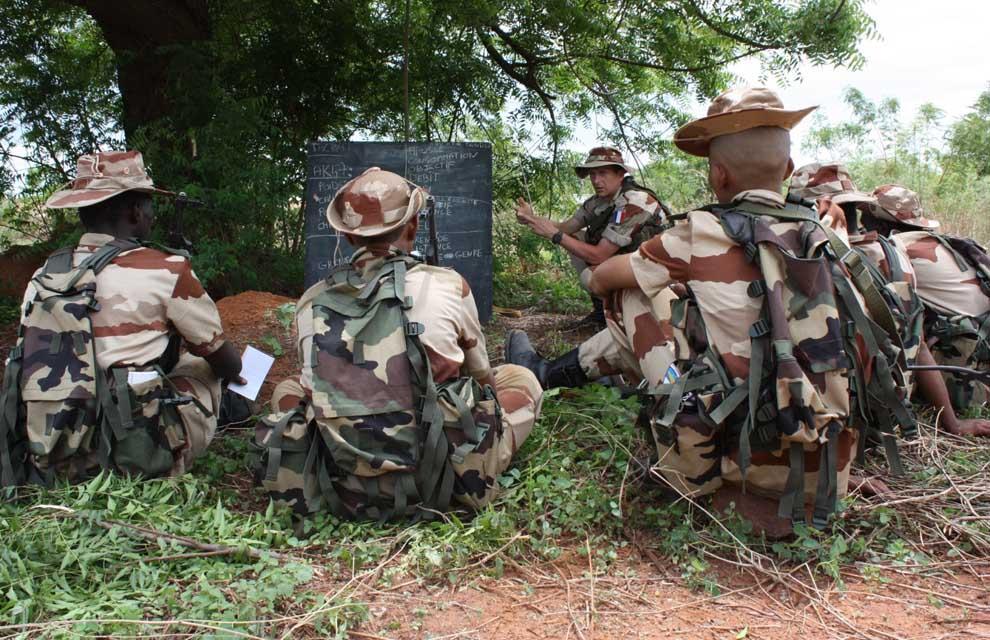Europe more vulnerable than in 1990, according to the White Paper (French)
(B2) Rather pessimistic, the White paper (French) on defense, publié en juin, évalue les menaces auxquelles doit faire face la France et l’Europe. Il considère ainsi que "Europe's population and territory are now more vulnerable than in the 1990s, i.e. more exposed to direct threats".
Among the new vulnerabilities, he cites:
• Lterrorism. Jihadism remains one of the “main threats against Europe and its nationals in the world”. In addition to explosives and suicide bombings, "urgent action is necessary" in the face of the risk of the use of even rudimentary unconventional weapons.
• La missile threat. By 2025, Europe will be within range of new ballistic capabilities, new data for which we must prepare”.
• Lattacks against information systems. The very high potential for the destabilization of everyday life, for the paralysis of critical networks implies “a new attention for the reinforcement of defenses (as) for the capacities of retaliation”.
• Lespionage and influence strategies. Maneuvers aimed at "obtaining protected information on our security strategy, our diplomacy, our civil and military technologies" or general disinformation aimed at the weakening of a company or a person, which may reach foreign communities, the prosecution globalized exchanges are conducive to offensive intelligence activities as well as to the development of strategies of influence intended to diminish our role in the world”. these risks make it necessary to develop capacities for “counter-interference but also soft power based in particular on the presence in the media and the internet”.
• Lthe big criminal traffics. Criminal organizations such as drug cartels now have financial and logistical means comparable to those of certain States (700 to 1 billion dollars per year according to the IMF).
• Lnew natural and health risks, “likely to cause disruption of economic exchanges” and increased technological risks (urbanization and demographic change).
• Lexposure of nationals abroad. The evolution of French and European communities abroad, their new geographical distribution and the instability of certain host countries make them more vulnerable to risks, particularly health risks, and attacks (terrorist or otherwise).
Le Livre blanc mentionne aussi plusieurs “disturbing trends'
• The setbacks of globalization. « La mondialisation va de pair, paradoxalement, avec une montée des nationalismes, du fanatisme religieux, ou des réactions de reprise en main autoritaires ». Elle nourrit aussi des inégalités économiques et sociales flagrantes. La croissance économique de nouvelles puissances engendre le développement de la consommation d’énergie. Simultanément les technologies permettant la fabrication de missiles (balistiques, croisière) ou de drones se sont largement diffusées. (…) L’accélération de la circulation de l’information et avec elle du rythme de l’action dans tous les domaines rend infiniment plus complexe la gestion de ces crises » (…) l’immédiateté qu’ils engendrent entraîne la diffusion rapide de toutes les formes de crises, politiques, économiques et financières.”
• Levolution of forms of violence : terrorism changed scale on September 11, 2001. "(It) has become capable of striking at the heart of all countries, on an unprecedented scale of violence, with a degree of international preparation and intensity in the action never before achieved by terrorist groups”. Moreover, the privatization of armed violence is growing. “In parallel with the generalization of the phenomenon of militias in more fragile states, private military companies are being created on the fringes or alongside the regular forces”.
• Lrise in military spending around the world. From $867 billion in 1998, they reached $1204 billion in 2006 (the level at the beginning of 1990). An increase due in large part to increased spending in the United States but also in South Asia (China, India). Europe is, with South America, the continent which has increased its expenditure the least in proportion (the United Kingdom being the main factor of increase).
• Lthe great unresolved crises. Apart from the Balkans, “A major conflicting geography is emerging, from the eastern Mediterranean to India”. In the Middle East, there are four sources of conflict: Israel-Palestine, Lebanon (Syria-Iran), Iraq, Iran. Operations drag on in Afghanistan, creating a sense that Western power is exposed and vulnerable.” The situation in Pakistan appears increasingly fragile. On the African continent there are still many conflicts and guerrilla situations: Horn of Africa, Great Lakes region or Sahelian space. In Asia, the risks of unresolved conflicts, linked to history, are likely to undermine international security on a large scale, if they are not prevented: Korea, Taiwan and Kashmir.

